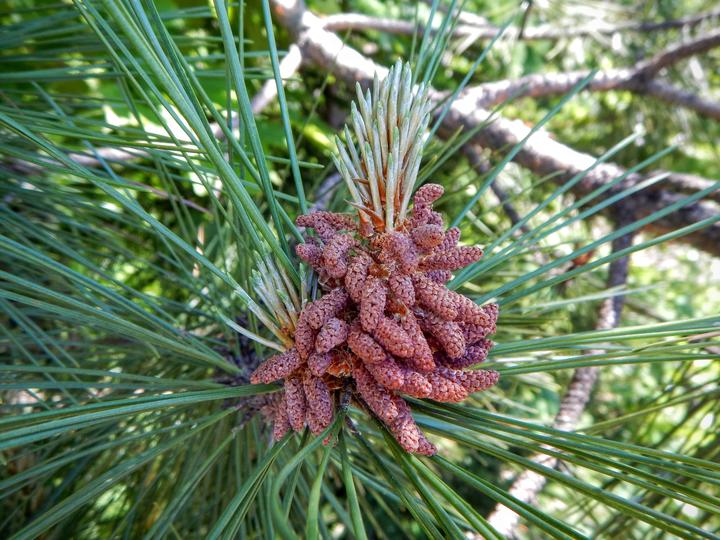More names for this tree
Anishinaabemowin: Bapakwanagemag
Dakota: Çaŋwazi (pine tree)
The Dakota and Anishinaabe were among the earliest people to name Minnesota’s plants and animals, as well as to understand them in relation to Minnesota’s climate and seasons. Those original names are still in use, and several are included on the Season Watch website.
Latin (or scientific name): Pinus resinosa
The scientific community has a convention of assigning agreed-upon Latin names to every kind of organism. Using scientific names helps people communicate confidently about the same organism and organize lifeforms based on how closely related they are.
More common names: Norway pine
Page contents

Photo © nmosick, some rights reserved (CC-BY-NC)
iNaturalist observation
About the red pine
- Red pine can be identified by its reddish-brown bark and long, stiff needles that grow in clusters of two. Red pine trees can grow up to 100 feet tall and live to be 500 years old.
- Red pine trees bear both male and female cones on the same tree. Male cones release pollen that is dispersed by wind. Female cones are nearly round in shape and two to three inches long.
- It takes two years for a cone to fully mature.
- Male cones tend to be concentrated in the lower part of the tree, while female cones are found in the upper crown. This distribution helps prevent too many female cones being pollinated by pollen from the same tree.
- An evergreen tree, the red pine retains its needles all winter.
- Fun fact: Red pine is the official state tree of Minnesota.
Visual guide to phenology
Evergreens can generate energy year-round, but growth is much greater in summer than winter, owing to light availability. In spring and early summer, watch for new needles that are soft and pliable before the cuticle develops. Also watch for the appearance and status of cones.
Note to observers
This page explains general clues to watch for when observing red pine phenology. However, this page does not instruct observers on how to identify this plant or collect data in a standardized way.
- For help with identification, see Minnesota Wildflowers.
- For guidance on collecting data, see Nature’s Notebook.
Graphs and historical data
Note: The Orientation Center provides a map, as well as information on reading graphs; interpreting summary statistics, who collected the data and how; and how to download datasets for independent exploration.
First fall color
- Earliest: August 27 (occurred in 2012)
- Average: September 10
- Latest: September 20 (occurred in 2002)

Keep exploring Season Watch
Keep exploring Season Watch
Co-author: Audrey Negro, Minnesota Master Naturalist









